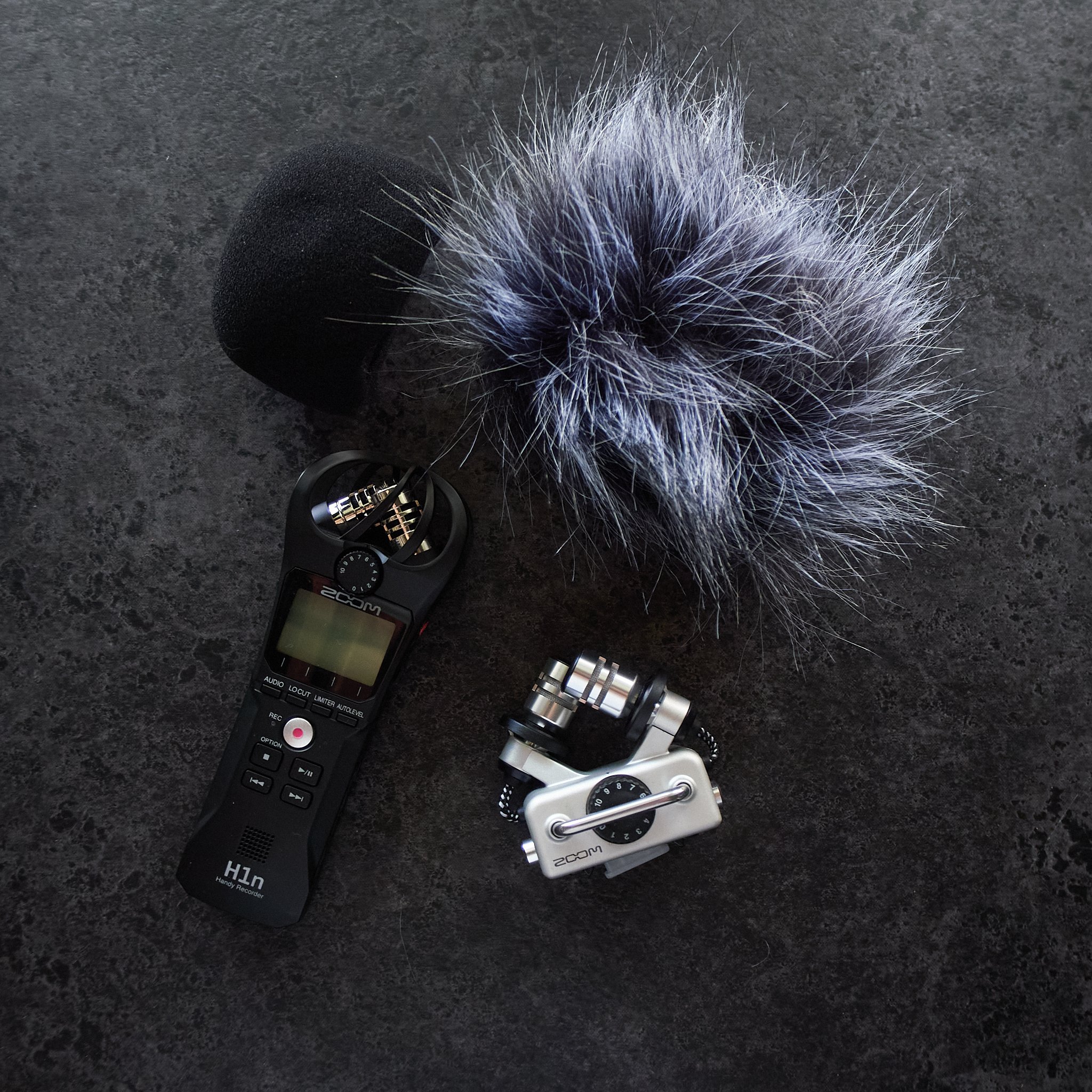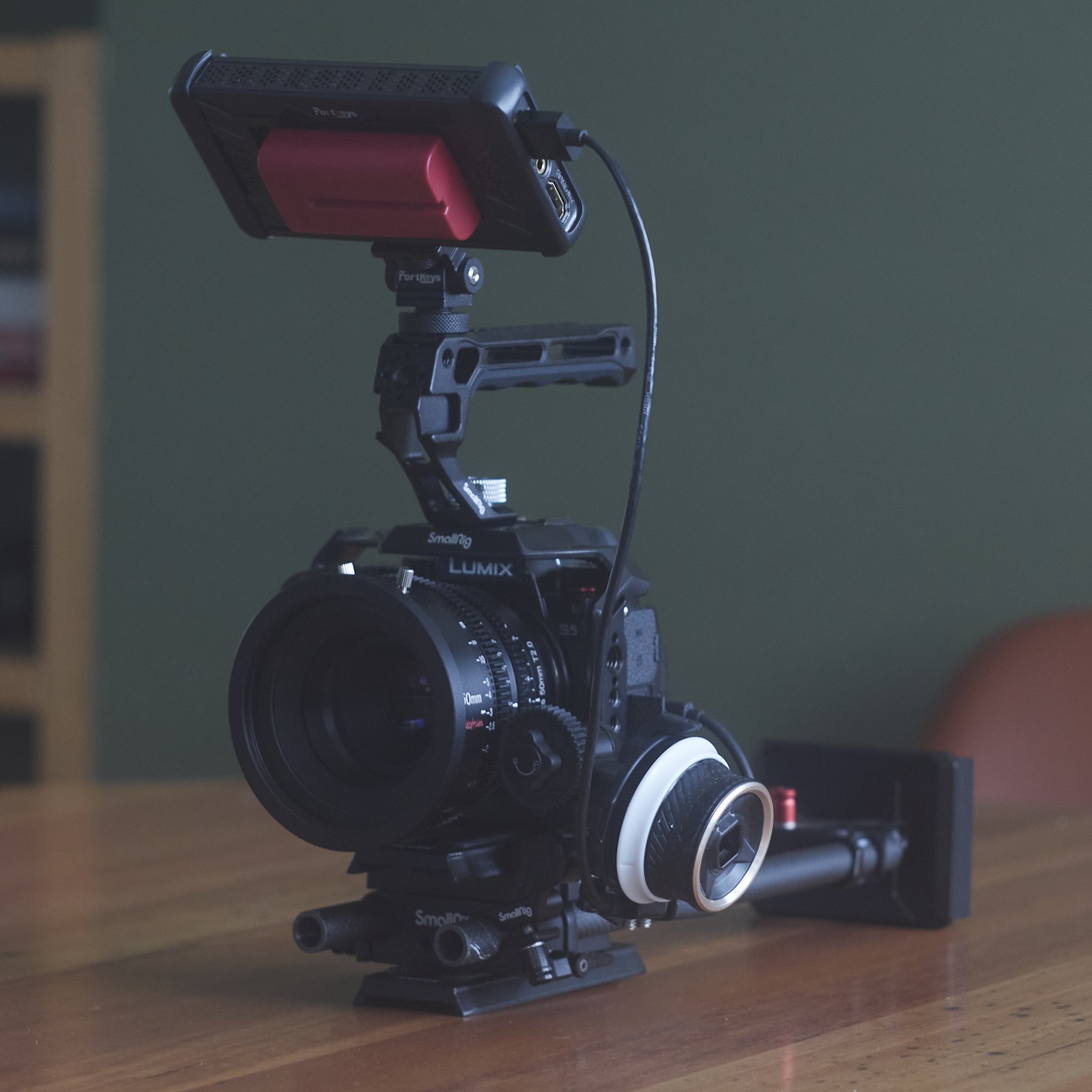Really, in lots of ways, but specifically, booming mics might be a thing soon and I must admit, I have not been on this properly.
Options.
MKE-400 Sennheisser shotgun mic.
Zoom SSH-6 on F1.
SSH-6 with ECM-3 or ECM-6 extension cable to the F1/H5.
Sennheisser MKE-600.
Zoom M3 float shotgun.
Something I own now in my extensive condenser and dynamic range to the AMS-24 or H5/F1.
Use LAV’s.
Now booming means basically mic off camera-nearer the subject, so it is not always high above just closer, maybe on a stand or tripod. A mic should always be as close as possible to the subject.
A boom mic needs to be directional, have good off-axis rejection, good gain, low handling noise, good wind rejection and some control at the user end.
The SSH-6 is my first option, impressing me with previous uses and its mid-side option, but it has one issue, getting it close to a form factor that is practical. This can be fixed with the recently discovered ECM-3 or 6 meter cables from Zoom (you always need to check under every rock for ideas with these guys as they constantly surprise). Cost of the fix $100-120au.
The MKE-400 is the next logical option. Coming close to the performance of the MKE-600, but with built in shock and wind protection and running to a camera via a 3.5 cable, it is probably ideal. This one needs better wind protection than it currently has though. The provided “dead critter” is good, but not perfect. I could double “blimp” it. Cost of fix $0-400au.
The MKE-600 is in a lot of ways a duplication of the 400, but with better rejection and tighter gain, but not significantly superior and would be bought for just this role as I have other options for other duties. Cost of fix with wind sock $370-450au.
The Zoom M3 is interesting. It has everything the others have with 32 bit float, plus mid-side and a backup recording for added peace of mind (no levels required). The RF interference issue is unsettling, although that seems to be fixed. This mic is light, but very plasticky feeling and quite expensive. Fix cost $300au.
One of my existing condenser or dynamic mics could work. The Lewitt 040 Match and sE V7 are the most likely two. The V7 has a nice pattern, the 040’s are tiny and super sensitive. The dynamics probably need to be closer, the 040 might be a little thin sounding. Realistically, these are great indoor options, but not ideal for outdoors, especially as wind rejection is not in their design remit. Cost of fix $0-unknown for wind protection (the 040’s fit my Rode wind socks).
LAV mics like my M1 Larks are an option and a good one. The only real issues are obvious (you can see them) and they are limited to two users. In reality, these will be non-issues.
Thinking?
My gut says spend the dollars on the MKE-600 and just get into a mic made to purpose.
My heart says the SSH-6 on an extension, because it just works, is cheap and adds versatility to my Zoom kit overall.
My head says the MKE-400 for the same reasons as both above. The 400 is also less likely to be used as I have previously as I will have the time for a proper Zoom rig from now on.
A little voice on my shoulder, possibly with horns and a tail is whispering “Zoom M3”.
If I had no options except what I have now, the H5 or F1/SSH-6 works fine and at up to 30m, the F1 for boom pole work, as does the MKE-400 if the wind is within normal tolerances.
A Wind Noise Test
A basic test of the wind proofing of my current offerings and a surprise or two.
I got my Zoom kit out, the MKE-400 and a Boya MM-1 mini shotgun (which is my favourite in this class and it has a beefy wind breaker). My “wind” was a 40cm desk fan set on high from a few feet away on side to side rotation. If this was a stack of paper test, it would clear the it in seconds. I held each mic as close a half a metre from the fan.
The SSH-6 on the H5.
This is my main hope as the dead cat is decent and the mic powerful.
Without; Ouch! This thing does not miss much.
With; At any angle and with the mid-side pickup set at +5 to -20, slight but consistent wind sound.
Findings; Good enough for most uses, but will fail in strong or buffeting wind, possibly within fixable or ignorable tolerances. This probably rules out the M3 as that has basically the same mic in a different form.
The Boya MM1 into the H5.
Without; not tried-no point.
With; Ok, with consistent but generally quiet grumble. Handling noise was bad, but no shock mount used.
Findings; Not bad as an emergency option.
The MKE-400 into the H5 or Camera.
This is the logical choice, basically a MKE-600 lite.
Without wind muff (but its own “blimp”; Ok. about the same as the Boya, but less consistent as I moved it around.
With the muff; Better, about the same as the SSH-6 with its fluffy, maybe a little twitchier at some angles. The sock is thinner than the others, which is a shame.
Findings; Almost enough, maybe just a little under done as I have found in real world use. If I could do a decent home made blimp, I may be able to stretch this.
The surprise XYH-5 on the H5 (or H1n).
I added the H1n as well, because it is basically the same.
This one was only tried because it was there and I got its dead critter out by mistake.
Without; Genuine pain and throw in some handling noise for good measure. Don’t try this at home kids.
With the pop filter; About the same as the MKE on its own. There is also an “uber” pop filter also, but these are generally not the best wind barriers.
With the fluffy (and it is fluffy, like a baby bird); The best by far. I could not get this to freak out. I even caught the fluffy on the fan trying to get a reaction!
Findings; This is the wind king both ways. It was by far the worst without shielding, the best with. Problem is an X/Y mic is not ideal for boom work being physically short and the wrong pickup configuration. I guess wide gain-thin sound is better than wind noise sometimes and the X/YH-6 has a 90 degree mode (if the wind sock fits it). This would be a good environmental option in every way, small, sensitive, wind proof and in the kit.
*
With my current resources I can do a boom mic in a few ways and even handle the nastiest of real world wind conditions, but it takes a village.
Am I better off just going the MKE-600 and a decent sock or blimp or work within my range now and see what comes, which often amounts to a lot of unfounded paranoia?
I could also maybe look at some other wind socks for the SSH-6.
Ed. We had a nasty weather front come through this afternoon so I had a chance to try the same test in blustery conditions and the same result. The SSH-6 and dead cat were good, almost good enough, but the XYH-5 and dead…gerbil (?) were even better with no hum, crackle or thump. I did get some rustling noise at first, but realised it was the head phone buds, not the mic!

























































































